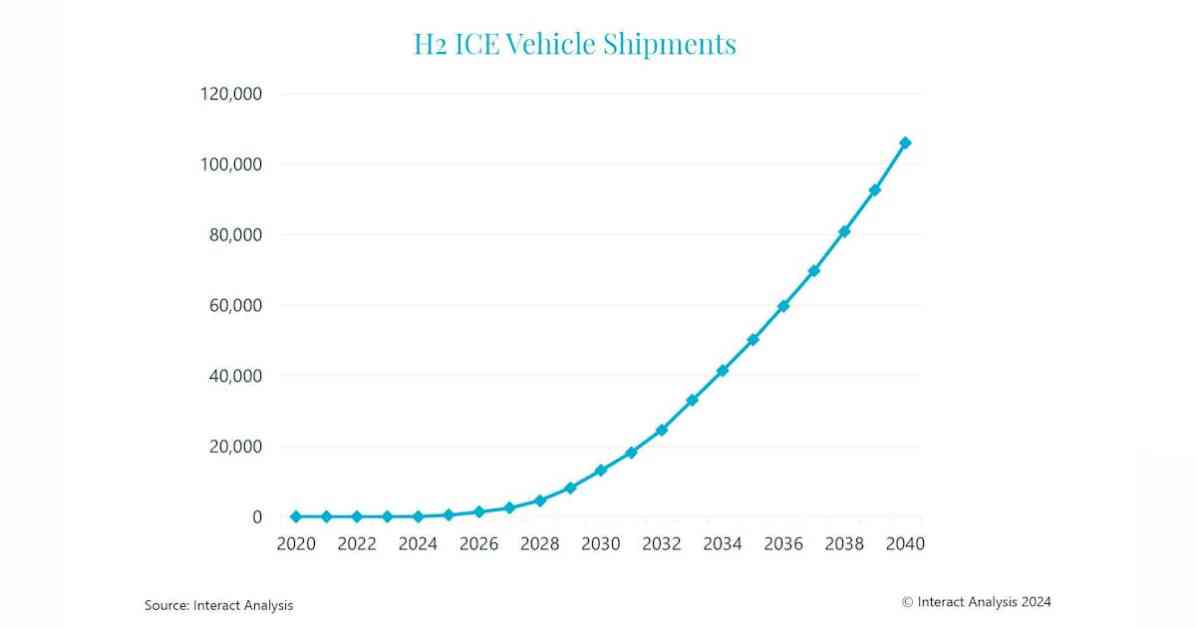The global hydrogen internal combustion engine (H2 ICE) industry is experiencing slow growth, facing challenges that need to be addressed for widespread adoption of hydrogen-powered vehicles. According to Interact Analysis, the main obstacles hindering the sector’s expansion are the high cost of fuel and a lack of infrastructure to support market growth.
While the sector is gradually expanding, the number of new H2 ICE vehicles registered annually is predicted to be 13,150 by 2030, a small fraction of total vehicle sales. However, this number is expected to increase significantly to over 100,000 vehicles per year by 2040.
In addition to cost and infrastructure issues, there are engineering challenges that need to be overcome for hydrogen ICE vehicles to become more widely accepted. These challenges include issues related to precombustion and poor injector lifetime, which currently stands at just over 1,000 hours.
The latest Interact Analysis report on the hydrogen ICE market suggests that significant technological advancements have been made or are possible to address these engineering challenges. Experts believe that improvements in precombustion, injector lifetime, leakages, embrittlement, and engine redesigns are essential for the industry’s growth. There is a long-term goal to reduce the cost of injectors from $1,000 to as close to $100 as possible.
Jamie Fox, Principal Analyst at Interact Analysis, highlights that while hydrogen ICE technology is making progress in overcoming technological and legislative barriers, market challenges remain significant. The high cost of fuel, especially for trucks and buses, poses a major hurdle for the industry. Additionally, the cost per mile for H2 ICE vehicles is higher than fuel cell vehicles, with varying costs for off-road machines depending on the application.
Commercialization of the hydrogen ICE industry is still a long way off, with the total cost of ownership expected to remain higher than diesel or battery electric vehicles until at least 2035. The availability and affordability of necessary infrastructure also present additional challenges for the sector.
Overall, the slow growth of the hydrogen internal combustion engine industry highlights the need for continued technological advancements, cost reductions, and infrastructure development to drive wider adoption of hydrogen-powered vehicles in the future.
